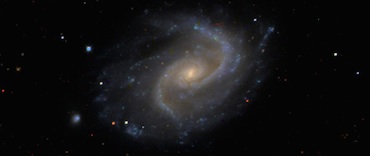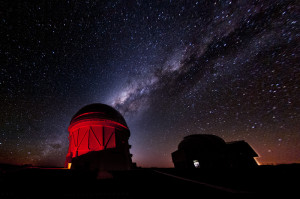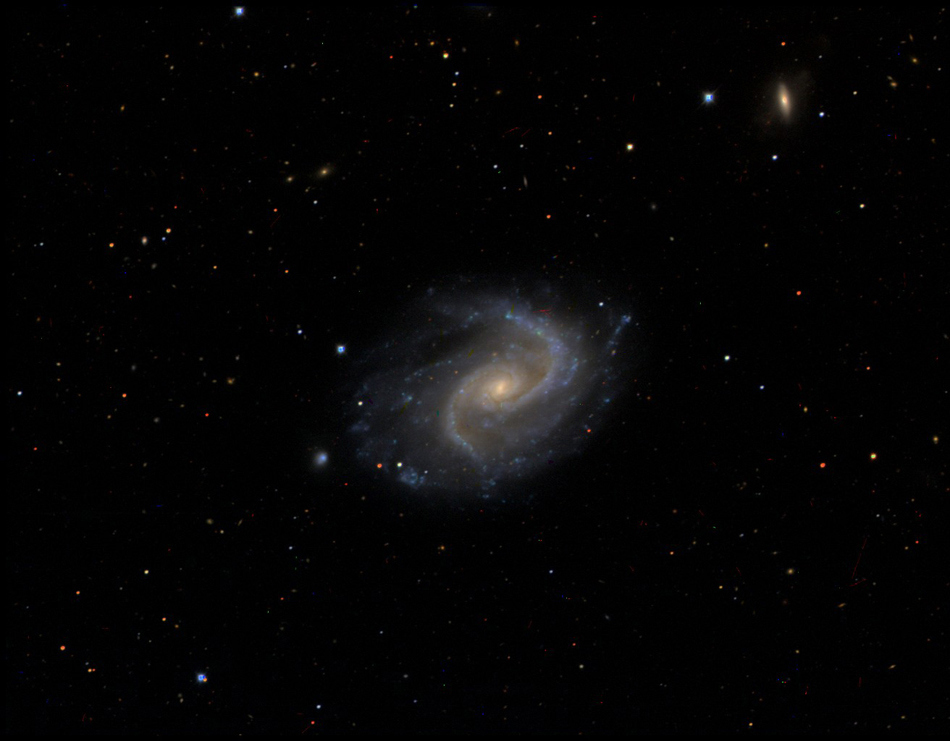
Spiral Galaxy NGC 0895 is located in the constellation Cetus, about 110 million light years from Earth. This image was taken with the Dark Energy Camera, the primary research tool of the Dark Energy Survey, which just began its second year of cataloguing deep space. Credit: Dark Energy Survey.
The Dark Energy Survey has just kicked off its second season of snapping shots of deep space with its 570-megapixel camera mounted on the Victor M. Blanco Telescope in Chile. The U.S. Department of Energy’s Lawrence Berkeley National Lab, (Berkeley Lab) is a founding member of the DES collaboration and its Microsystems Lab designed and fabricated all 62 of the CCDs in the camera, which will be used over the survey’s five-year mission to investigate dark energy and its impact of our universe.
This week the DES collaboration is announcing a re-launch of its photo blog called Dark Energy Detectives. The blog, which highlights images from deep space, will post a new image or video every two weeks during the DES second season as well as an explanation of the image provided by a scientist. In its first year, Dark Energy Detectives drew tens of thousands of readers and more than 46,000 followers on its Tumblr site.
Additionally, on September 1, 2014, data collected by DES in its first season will become freely available to researchers worldwide. Currently the hundreds of thousands of individual images taken during the first season are being analyzed by thousands of computers at the National Center for Supercomputing Applications at the University of Illinois at Urbana-Champaign, Fermi National Accelerator Laboratory (Fermilab), and the National Energy Research Scientific Computing Center at Lawrence Berkeley National Laboratory. This processed data will be released in coming months as well.
“The first year of data from DES is just a taste of what is to come from the full five-year survey,” says Natalie Roe, Director of the Physics Division at Berkeley Lab. “The deep, high quality images will give scientists much to chew on and potentially lead to exciting new results as the second year of the survey is in progress.”
Scientists will use these images to unravel the secrets of dark energy, the mysterious substance that makes up 70 percent of the mass and energy of the universe. Theory predicts that dark energy works in opposition to gravity and is responsible for the accelerating expansion of the universe, but observations such as those gathered by DES are needed to refine the models.
For more information, go here.
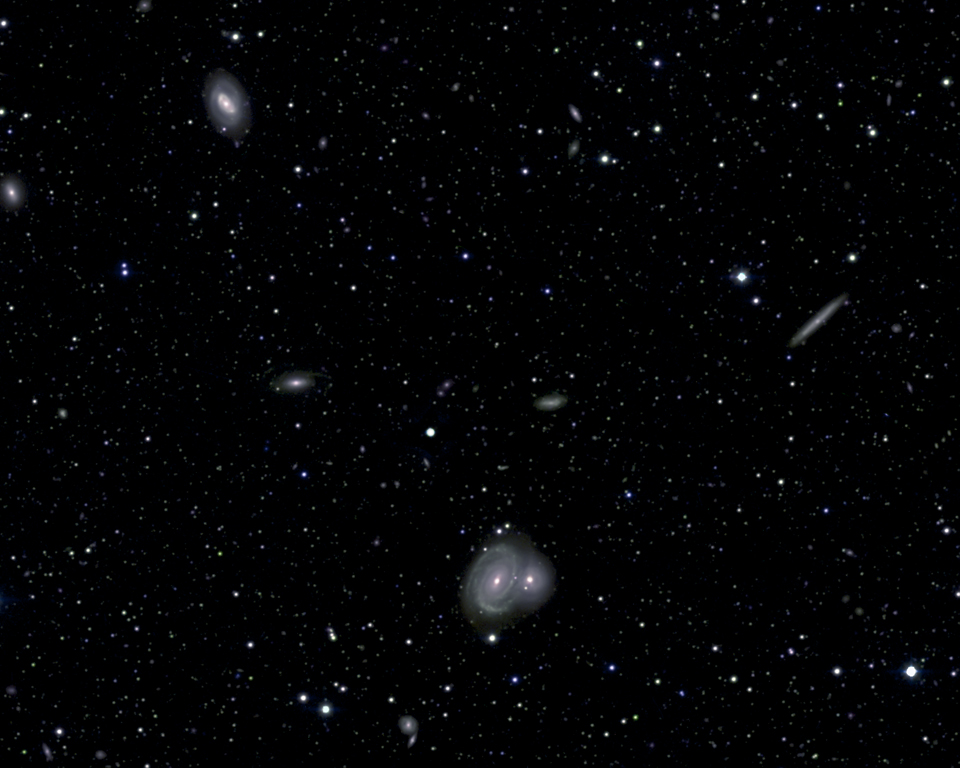
The large spiral galaxy in the center of this image is roughly 385 million light years from Earth. This image was captured with the Dark Energy Camera as part of the first year of the Dark Energy Survey. The camera can see 8 billion light years into deep space. Credit: Dark Energy Survey.
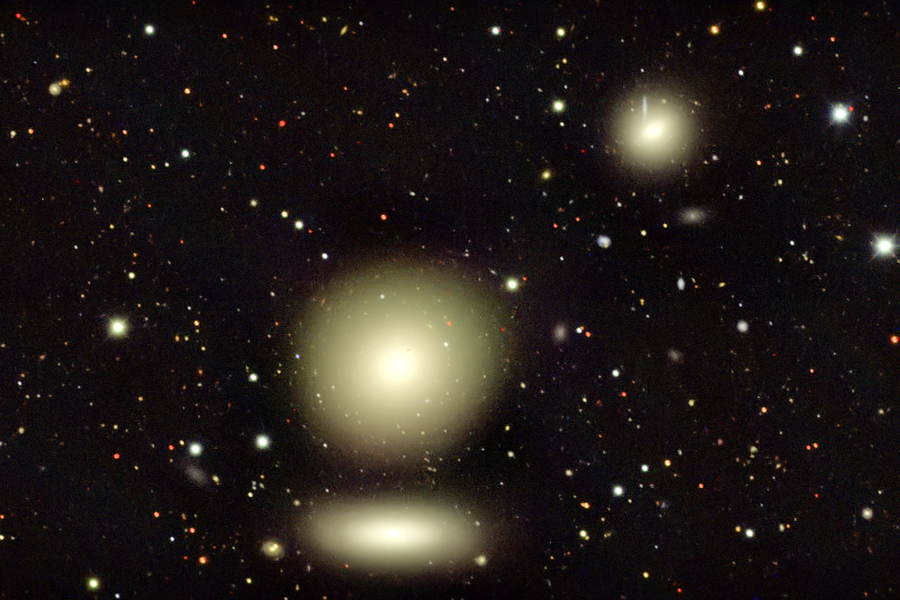
The three large objects in this image captured by the Dark Energy Camera are galaxies in the nearby Fornax cluster, roughly 65 million light years from Earth. The other points of light are also galaxies, much further away. The Dark Energy Survey will compare patterns in galaxies at different distances from Earth to see how dark energy has affected space-time over the eons. Credit: Dark Energy Survey.
